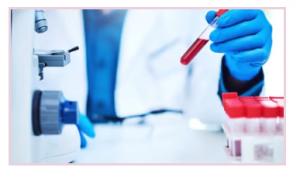After learning about your medical history, the doctor will perform physical and breast exams to see if the lymph nodes of the underarms and neck are enlarged, and to see if there is any hardness or abnormality in the breast. The doctor may also arrange the following tests for you if necessary.
 Mammography is useful when the mass has not formed enough to be found with a finger-pressure check. Mammography helps detect very small cancer tumours. Mammography is the best test for women over 50. If you’re over 50 or if there are women with breast cancer in your family, you should talk to your doctor about the best time for you to start this examination regularly.
Mammography is useful when the mass has not formed enough to be found with a finger-pressure check. Mammography helps detect very small cancer tumours. Mammography is the best test for women over 50. If you’re over 50 or if there are women with breast cancer in your family, you should talk to your doctor about the best time for you to start this examination regularly.
 Image used under license from shutterstock.com
Image used under license from shutterstock.com
 The technician will first apply a lubricating gel to your breast and then move a microphone-like device around within a specified area of your breast. A computer converts the echoes into an image showing whether there are lumps in the breast. This test is painless and takes only a few minutes.
The technician will first apply a lubricating gel to your breast and then move a microphone-like device around within a specified area of your breast. A computer converts the echoes into an image showing whether there are lumps in the breast. This test is painless and takes only a few minutes.

Image used under license from shutterstock.com

If a mammography or ultrasound scan finds a hard lump that is suggestive of malignancy, a biopsy will be required. The doctor will take a small sample of cells from you and check the cells under a microscope to see whether they are benign or malignant. Biopsy methods include:
Fine needle aspiration
This sample collecting can be done in the outpatient department of a hospital. The doctor uses a very thin needle and a syringe to extract a sample of cells from the breast for cancer cell testing. The procedure is similar to drawing blood. It’s simple and fast. In addition to taking cells for examination, this technique can also remove fluid from benign cysts.

Image under license from shutterstock.com
Core needle biopsy
The needle used in this method is slightly thicker than the kind used in a fine needle aspiration. You will be given local anaesthesia. The doctor will then extract a small piece of breast tissue for cancer cell testing. This method is the highly recommended approach in diagnosing breast mass highly suggestive of malignancy.

Image under license from shutterstock.com
Excision biopsy
You will be given general or local anaesthesia. The doctor will then remove the entire lump for examination.

Image under license from shutterstock.com
 By testing a blood sample, the doctor will be able to get information about your general health, blood cell count, and kidney and liver function, as well as other information that your clinician may need to proceed with treatment.
By testing a blood sample, the doctor will be able to get information about your general health, blood cell count, and kidney and liver function, as well as other information that your clinician may need to proceed with treatment.

Image accessed from: https://www.fiercebiotech.com/medtech/freenome-passes-1b-funding-mark-290m-from-roche-for-cancer-blood-tests, accessed last July 2024.
This article is created and owned by Roche Hong Kong
References:
1. HK Cancer Fund. Breast-Cancer-Oct17 (v1.0). https://www.cancer-fund.org/wp-content/uploads/2018/03/Breast-Cancer-Oct17CC2.pdf. Accessed last July 2024.
